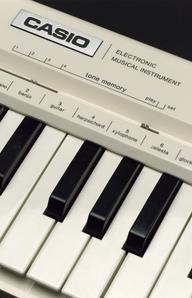

Wheatstone's original "Magic Lyre" for rendering vibrations audible at a distance, through wires.
Aged just nineteen, in September 1821, Charles Wheatstone brought himself into public notice an object known variously as the “enchanted lyre”, “Acoucryptophone”, or “magic lyre” at a music shop at Pall Mall and in the Adelaide Gallery. In 1831, Wheatstone described his “magic lyre” and demonstrated the conduction of sound by means of metallic wires at the Royal Institution.
The “lyre” was suspended by means of a wire passing through a tube in the ceiling into the room above, and there fastened to the sounding-board of a piano. The vibrations of the board were transmitted along the wire to the instrument and were there reinforced by its sounding-box, so that the instrument seemed to be playing by itself.
Wheatstone’s interest in acoustics was inspired by wanting to understand the properties of tone, such as timbre, in terms of vibration. Wheatstone worked on this research area for fifteen years, including researching the mechanical transmission of sound, visible demonstrations of vibrations, and properties of the vibrating air column. The latter was related to the Wheatstone family’s role in making flutes. In his early years of experimenting with acoustics, Wheatstone speculated on the possibilities of sound being transmitted over long distances and this led to his experiments with electrical telegraphy in the 1830s. In 1837, Cooke and Wheatstone patented the “five needle” electrical telegraph system.
See Wheatstone’s ‘Scientific Papers,’ 1879, pp. 47-63 and 'the Morning Chronicle' (London) 11 July 1821, page 1 for further information about Wheatstone's 'magic lyre'.
Details
- Category:
- Acoustics
- Object Number:
- 1876-593
- Measurements:
-
overall: 825 x 470 x 100 mm
- type:
- acoustic machine
- credit:
- Sabine, Robert




